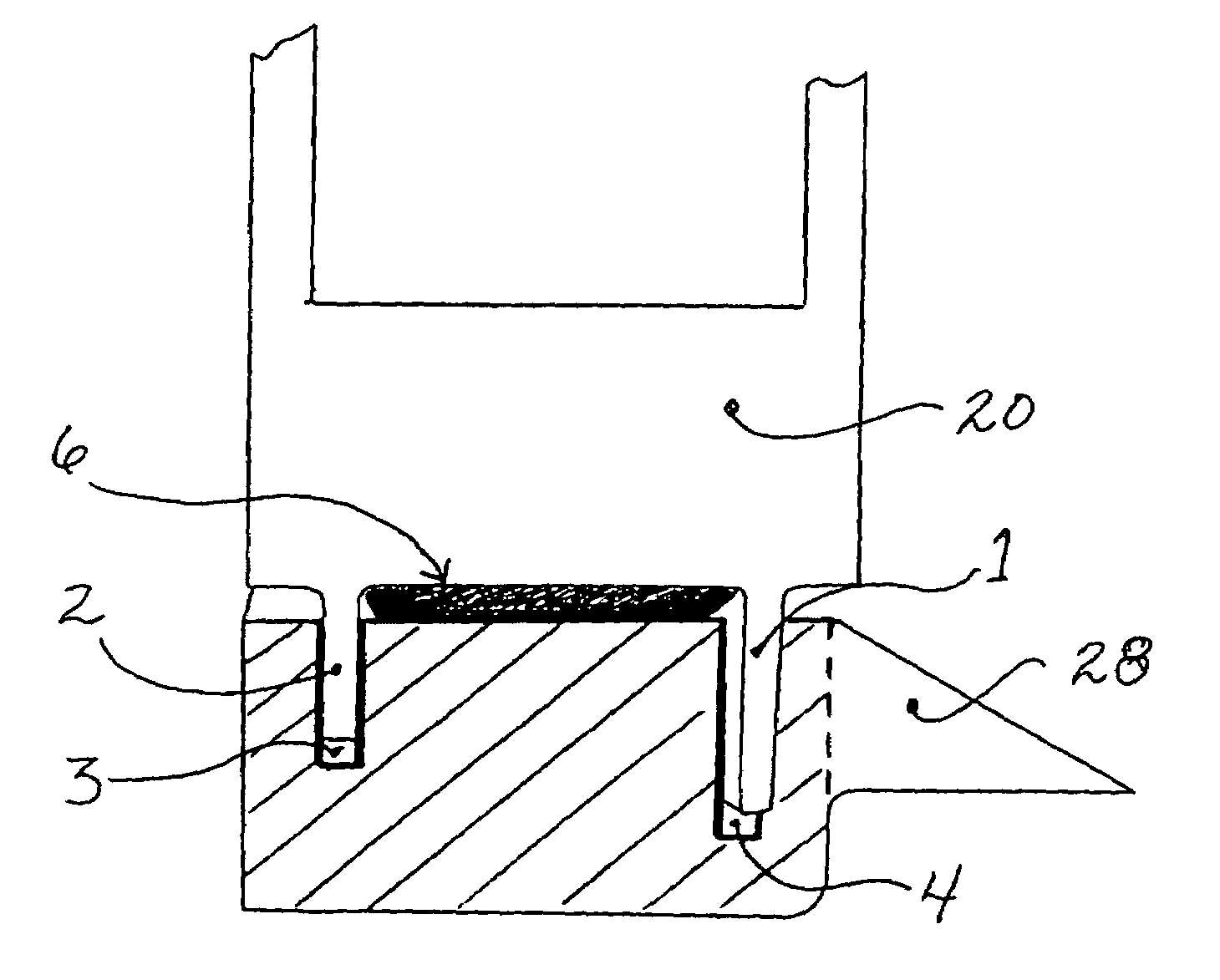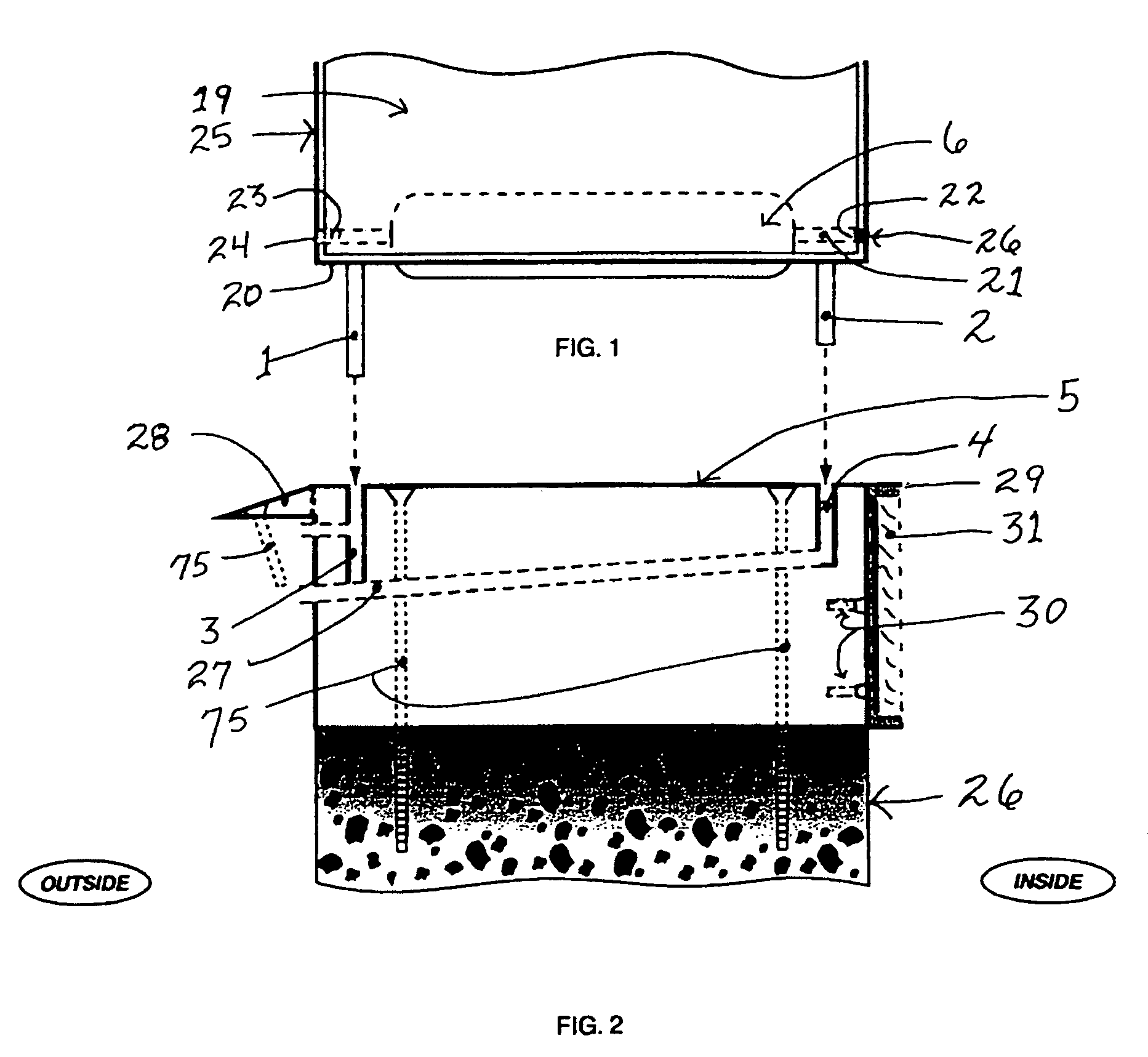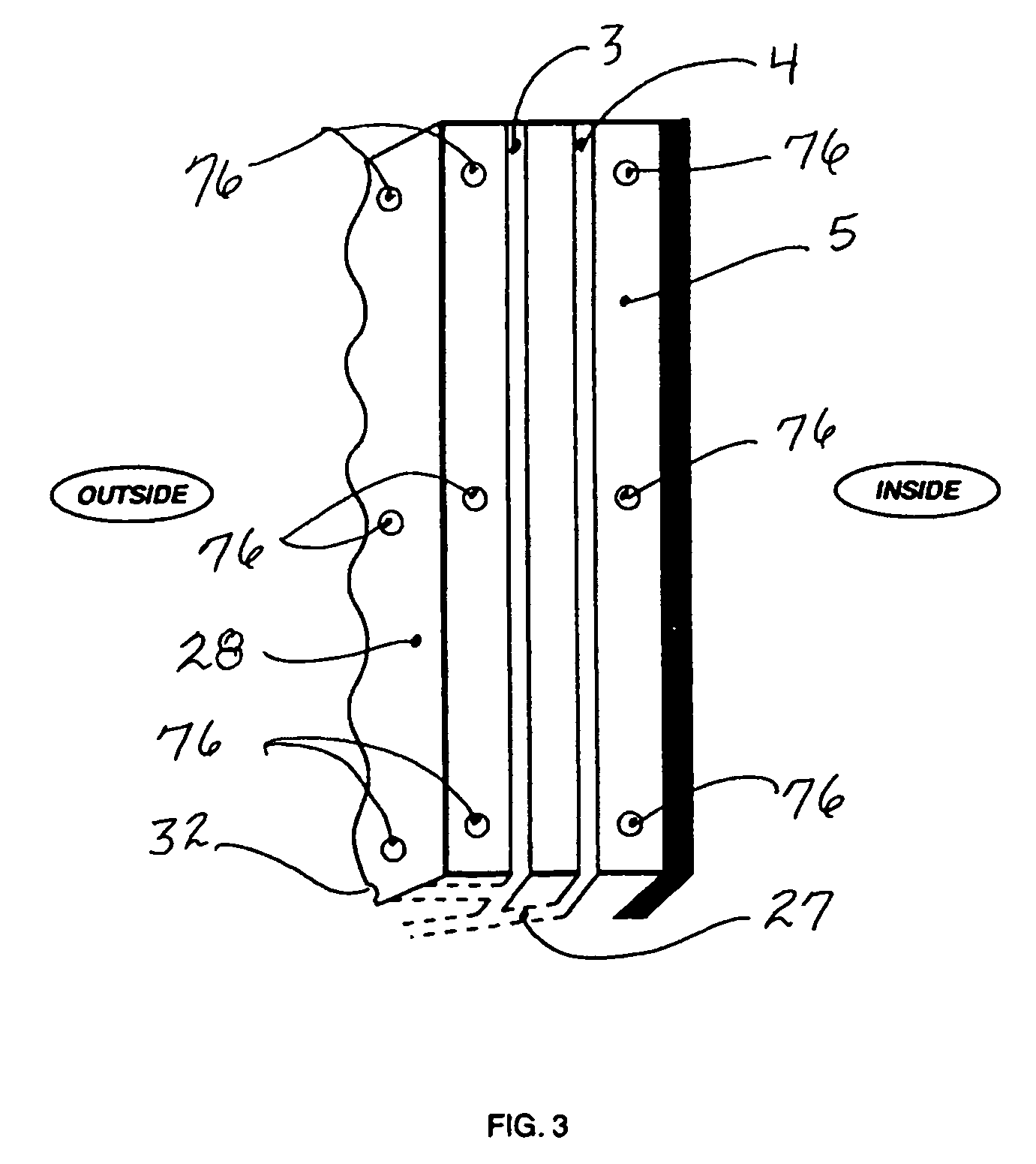Sliding door assembly for track, step plate, roller, guide and constraint systems
a technology of sliding door and step plate, which is applied in the direction of wing accessories, curtain suspension devices, manufacturing tools, etc., can solve the problems of reducing the service life of the wing
- Summary
- Abstract
- Description
- Claims
- Application Information
AI Technical Summary
Benefits of technology
Problems solved by technology
Method used
Image
Examples
Embodiment Construction
[0040]Utilizing time-proven marine architecture technology, the invention is designed with special attention to strength and stability. One of its innovative features is the elimination of the rails on the traditional sliding track. The single-track rail is replaced with a pair of solid metal rails referred to as the outside and inside guides. This is similar to a “tipsy” single hull boat being replaced with the more stable twin hulls of a catamaran. To further increase its stability against displacement, the outside guide is made longer than the inside guide. The same principle is incorporated in sailboats.. the longer the keel, the greater the stability.
[0041]The core of the invention consists of two occluding sections. The lower, or track, section which consists of the outside and inside guide channels running along the entire length of a smooth and level track. The inside section of the track is cornered at a 90-degree angle to match the level of the floor in the inside room. Th...
PUM
 Login to View More
Login to View More Abstract
Description
Claims
Application Information
 Login to View More
Login to View More - R&D
- Intellectual Property
- Life Sciences
- Materials
- Tech Scout
- Unparalleled Data Quality
- Higher Quality Content
- 60% Fewer Hallucinations
Browse by: Latest US Patents, China's latest patents, Technical Efficacy Thesaurus, Application Domain, Technology Topic, Popular Technical Reports.
© 2025 PatSnap. All rights reserved.Legal|Privacy policy|Modern Slavery Act Transparency Statement|Sitemap|About US| Contact US: help@patsnap.com



